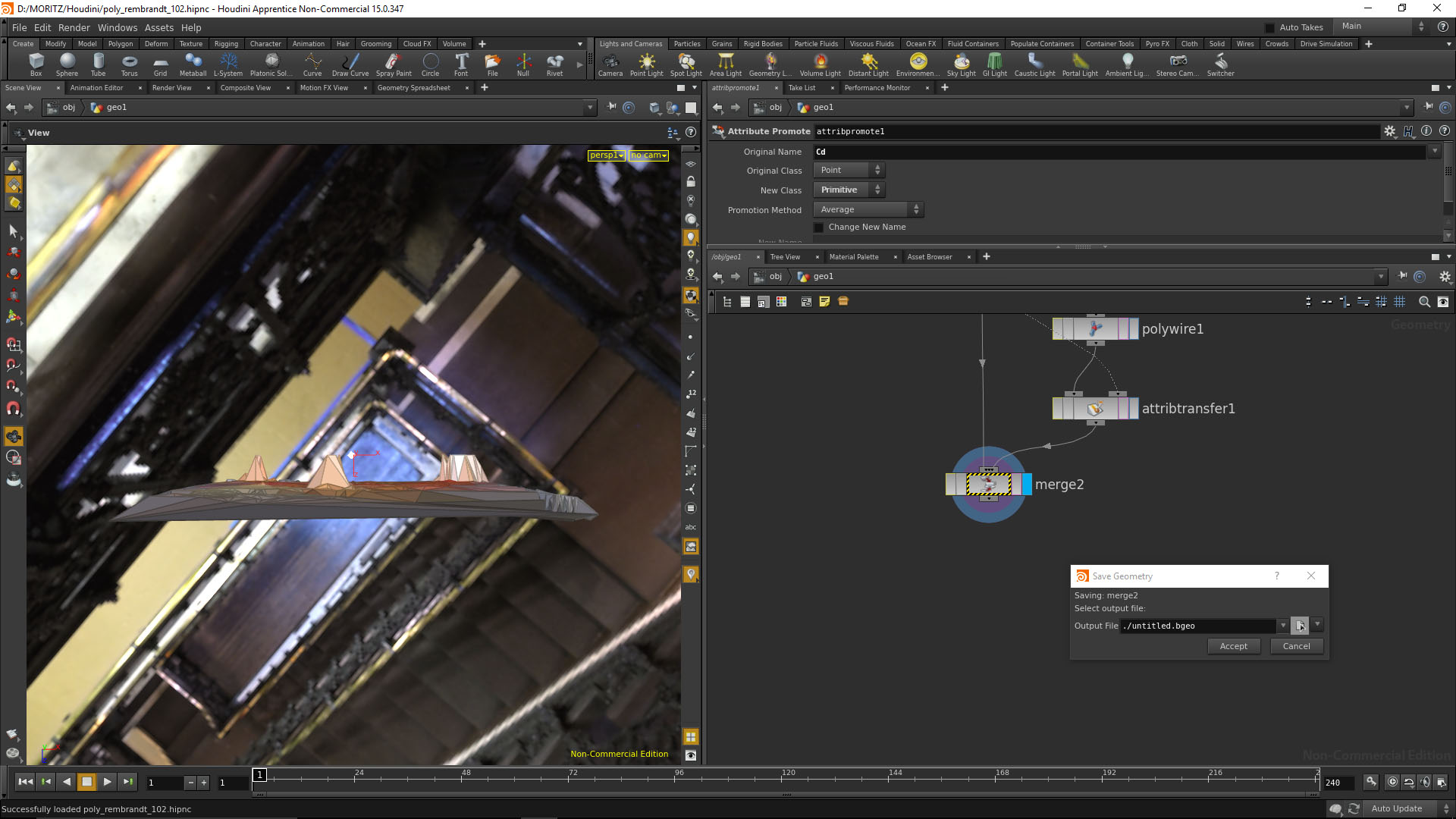

- #Houdini apprentice export frame range how to#
- #Houdini apprentice export frame range full#
- #Houdini apprentice export frame range software#
There are four spheres, each with its own primitives, and all of them are copies of one another.
#Houdini apprentice export frame range how to#
The following is an example of how to make alembic hierarchy in Houdini for Maya export. The transform container, which is used to define geometry in Maya, is named by two distinct terms: geometry and shape. When you export as an alembic, everything that has the same path attribute will be transferred to the same mesh. In this manner, the naming conventions and folder structure will be much easier to understand. By utilizing the Path Attribute, you can customize your Path. Houdini can be used to import Alembic files. This makes it easier for artists to create highly detailed and accurate assets for their projects with minimal effort. The material attributes that are preserved include color, opacity, displacement, normal, and various types of textures.
#Houdini apprentice export frame range full#
With Houdini’s alembic export feature, materials can be exported with their full attributes intact, allowing for more accurate and realistic renders. This can be especially useful for visual effects, animation, and for game development. This useful feature allows users to create highly-detailed geometry and material attributes with any given scene. Houdini has the capability to export alembic files with materials. How Do I Export An Animation From Houdini? You can save all of your objects (or a collection of objects) to an Alembic cache file and have them accessible later. Important note: Before clicking Export, you should enable UV Write and Write Face Sets options in the Advanced Options window. In Maya, you can save everything in the scene by selecting the Cache > Alembic Cache > Export All to Alembic option then selecting the objects you want to cache and then selecting Cache > Alembic Cache > Export Selection to Ale Meanwhile, in Unreal, users can export all of their assets to Alembic (or choose to export all of them) from the File Menu. In Maya and Unreal, Alebic caches can be exported, allowing users to save objects from scenes to cache files. Powerful Alembic Exporting For Maya And Unreal Users Once the Alembic file is exported and saved, you can then either upload it to a 3D printing service, or print it directly from your own 3D printer.
#Houdini apprentice export frame range software#
Depending on the software you’re using, you may also be able to export the Alembic file directly to a 3D printer, without having to go through the process of exporting the file to a different format. Once the Alembic file is open, you can then use the File -> Export menu option to save the Alembic file in a variety of formats such as FBX, OBJ, STL, and more. The first step is to open the Alembic file in the software of your choice. The Viewer State Browser window lets you list and manage python viewer states loaded in Houdini.Exporting Alembic is a straightforward process. The Viewer Handle Browser window lets you list and manage python viewer handles loaded in Houdini. The type properties window lets you edit the metadata and parameter interface of a digital asset node type. This window allows you to edit entries in the node gallery.Ĭreates, imports, or edits parameters on a node. The color editor is an expanded interface for picking colors. The frame range is preserved, the keys maintain their current frames, and the absolute timing of the keys and the FSTART/ FEND have been changed. Keys stay on frames 10, and the frame range stays at 1001-1020. Keep Keys on Current Frames = On & HOUDINI_DISABLE_FPS_MAINTAIN_FSTART is ignored The frame start is preserved, the keys and end frame maintain their timing relative to the start frame, and the absolute timing is modified. Keys are now on frames 10, and the frame range is 1001-1040.

Keep Keys on Current Frames = Off & HOUDINI_DISABLE_FPS_MAINTAIN_FSTART = 0 The absolute timing of the keys and frame range are preserved, but the frames are not. Keys are now on frames 20, and the frame range 2001-2040. Keep Keys on Current Frames = Off & HOUDINI_DISABLE_FPS_MAINTAIN_FSTART = 1 You can re-enable the old default behavior of changing the start frame to maintain its absolute time and maintaining the absolute times of keys by setting the HOUDINI_DISABLE_FPS_MAINTAIN_FSTART environment variable to 1.įor example, if you have a key on frame 1001, a key on frame 1011, and a frame range of 1001-1020 and you double the FPS, the following would occur:


 0 kommentar(er)
0 kommentar(er)
